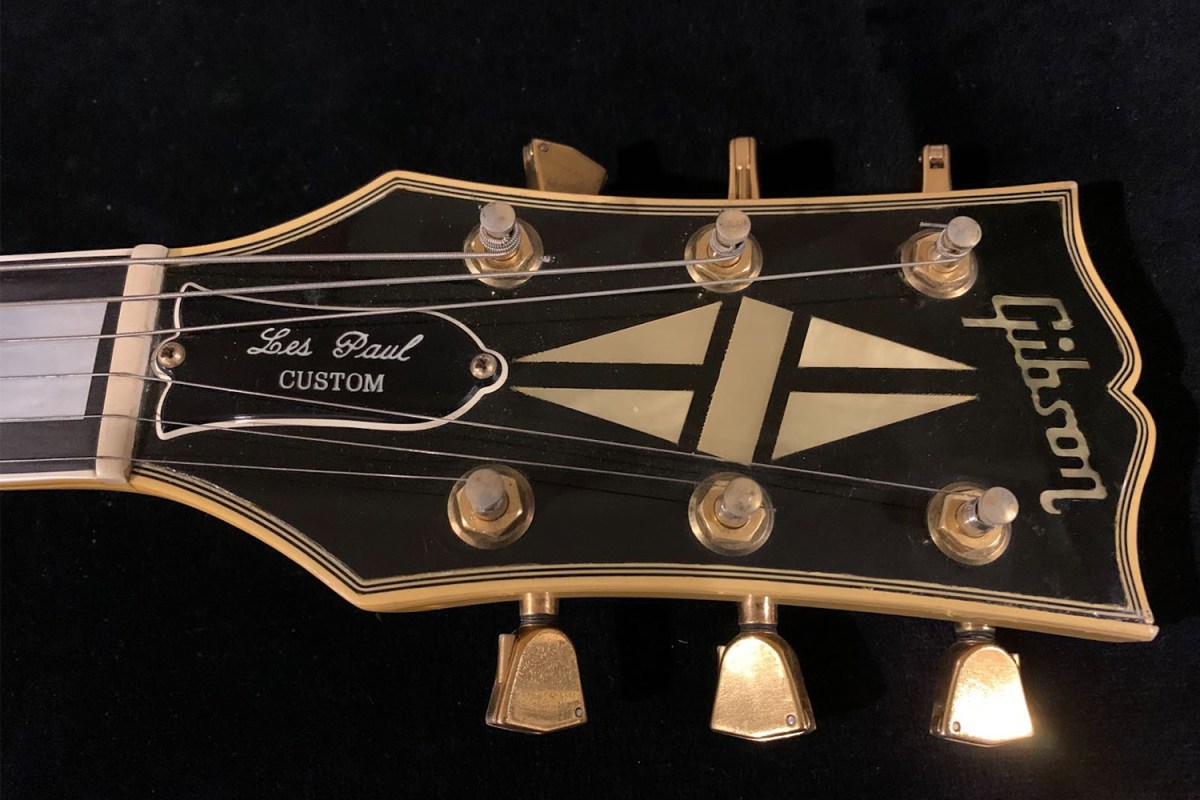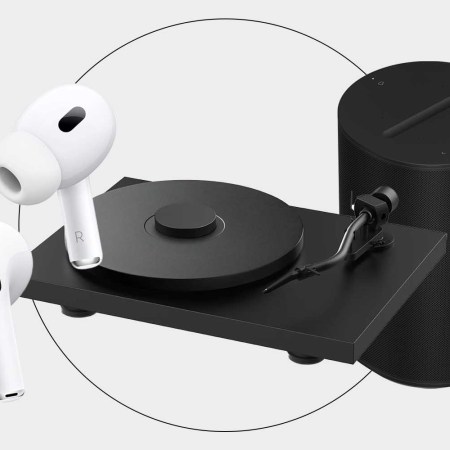I don’t have anything against new guitars. I have great memories of saving up all my summer pool-cleaning money for my first electric, a shining black Hondo II Professional, when I was 12. And I have similar recollections of my first American Stratocaster, which I scrimped for on my editorial assistant salary at my first real job out of college back in 1995. Both had that new guitar smell and both were much cherished.
But later on in my playing life I came to appreciate vintage guitars above all. My first experience with vintage guitars was a 1950s-era Harmony acoustic that my mom brought back from a flea market in Denver. It looked different, felt different, and sounded different. There were scuff marks on the top and you could tell the places on the neck where prior players spent the most time playing. The wood was old and dried, it seemed to resonate with a different quality. I thought it was cool that I was adding my own imprint to it, alongside the players who’d come before me. And there was something else. My mom had paid $40 for that acoustic gem. It was a long time ago, but I think a new and comparable model might have cost $150-250 in 1990s dollars. A light bulb went off for me. If you’re willing to put in the time searching and bargaining, you could level up your gear in significant ways.
Over the years, I spent more time in guitar shops, pawn shops and flea markets searching for the perfect instrument than I’d like to admit. But the search is absolutely part of the fun. I got better and better at it, and I learned some tips along the way. These tips helped me land a 1961 Rickenbacker 425 (found in Michigan), a 1972 Gretsch Country Gentleman (Michigan), a 1984 Les Paul Custom (Long Island), a 1963 Fender Jazzmaster (Manhattan), and a 1930s Regal (Missouri), among others. To me, they are all perfect — and all were priced well below market value and have appreciated considerably. (No guarantees on valuations, but it can be a welcome side effect!)
Reasons to Buy Vintage Guitars
They feel better. Okay, I’ll admit, this is squarely in the hands of the beholder. But there are changes that happen to wood (and frets) with time and usage. In my experience, great old guitars feel like a favorite garment you love to put on. The edges have been worn off, and there’s a noticeable comfort in the playing. But just like clothes, not everyone likes old wool or pre-worn Nikes, and you need to find what works for you.
They sound better. Again, this is subjective, and even controversial in some circles. Was old wood really that much better if you’re a regular human? Reams have been written about this. Wood type. Wood age. Wood chemistry. Is there magic in that old lumber, or is the fascination more about collectors seeking differentiation and romance? Perhaps if I got a brand new custom guitar with every tour, rock-star style, I’d feel differently, but to my ears these old axes have an inimitable sound. I asked Steve Schmidt, a longtime vintage guitar dealer and player who’s bought and sold thousands of guitars over the decades, for his thoughts on this.
“There’s no comparison between the vintage and new, assuming the vintage guitar was not neglected in a closet for years,” said Schmidt. “You can tell the difference between a 1950s Les Paul Junior versus a Custom Shop model without even plugging it in.” According to Schmidt, it does come down to wood. Back in those early days, guitar makers had their pick of the best wood. Martin stopped using Brazilian Rosewood in 1969, and it was banned from export by treaty in 1992 since it was being overharvested. Honduras Mahogany, also popular in making guitars, was restricted as well. In addition, continued Schmidt, electronic components like pickups were wound by hand and subject to imperfections that made their sound unique. Internal components like potentiometers were made to different specs in later years, and collectors prefer the earlier versions. “Makers thought they were making improvements, but new didn’t always transpire to better.”
The Thrill of the Hunt. You have to have patience, but to me this is arguably the best part of the vintage guitar scene. I remember driving into a small town in central Michigan and seeing a small guitar shop. I pulled over and walked in. Most of the instruments were new, entry-level models. I asked if they had anything older and the owner pointed me to the aforementioned Gretsch and Rickenbacker. I’ve unearthed amazing garage-sale finds and found highly collectible amps hidden under piles of junk at flea markets.
You’re Preserving History. You’re helping to keep old things vibrant and relevant. These guitars were made to be heard and enjoyed. Effort went into their production and prior care, and your investment is keeping them in circulation. That’s something to be proud of.
For the Investment. As noted, this is not a reason to buy vintage, but it can be a welcome benefit. (Or, you can lose, like any investment.) My Les Paul is worth about 4 times what I paid for it 25 years ago, and the same holds for most of my collection. I probably got lucky, but if you have a keen eye and look in offbeat places (roadside markets and garage sales) you can do well.
I asked Schmidt about this as well, and he had a similar perspective. “If you love it and are lucky enough to have it for 10 or 20 years, you’re going to do fine. If you buy it and hope to sell it in one or two years, you’re not going to be happy.” Schmidt added that while some limited-run Custom Shop models have appreciated, their increase in value is not comparable to sought-after vintage models. “[With vintage], you’re buying a piece from a certain time that’s never going to happen again.” That’s part of the excitement.
The Stories They Tell. Admittedly, this one isn’t going to resonate for everyone. But I like to think about all the shows, duets, campfire singalongs, and concerts these old guitars were privy to. You and the instrument are part of this continuing tale.
How to Find The Right Vintage Guitar
Assuming you’re convinced you want to buy vintage, here’s where to start and how to proceed. Note: I’m not a professional collector, and that’s a whole different ball game. My objective is to share my own experience of the different ways to find a great vintage guitar at a reasonable price, and have fun while doing it.
Look In Real Life
Most guitar stores have vintage sections (better these days than they used to be), and some stores are 100% vintage. I recommend going to an actual store or location (there are large annual vintage guitar shows in major cities like New York and Chicago) where the guitars can be played, because there’s no substitute for seeing, playing, and hearing them. I’ve only bought one guitar online, and it worked out fine, but it was pretty nerve wracking. Try different models (no Stairway, unless it’s the solo!) and amplifier combinations. Zero in on the guitar you like best, noting its year, model, serial number, finish, the particulars of the hardware, and condition. Straying from original equipment (tuners, pickups, etc.) usually severely decreases value. That can be a good thing if you’re just looking for a player and aren’t concerned about resale. But it’s important to know how original your instrument is either way. There’s an art to this, but look for telltale signs of removals or replacements. Quiz the seller. Compare it to other similar models and photos online or in books. Be circumspect and ask questions. You’re a private investigator on the trail of anything fishy.
Go Off the Beaten Path
The vintage market has matured a lot, and pricing is fairly established. But if you are willing to dig deeper I recommend hitting flea markets, vintage sales, estate sales, and garage sales. If you’re driving through a small town in the middle of nowhere, pop into the music or antique store and check out the inventory. The shop isn’t paying big city rent and demand is usually lower, so you might get lucky and find something great.
Look for Damage
Like anything old, time inflicts wounds. Look for warping, bowing, or twisting of the neck (the frets should be in alignment and level when you sight down the fretboard). Headstocks often break, so look for cracks or repair lines. Make sure all the tuners hold and work smoothly. Try all the electronic controls. If it’s an acoustic guitar, look for body cracks and decomposition or separation of internal bracing. Make sure the neck is solidly connected to the body without signs of repair. I don’t worry about cosmetics, paint chipping, or the like — but everyone has their own barometer for these things.
Schmidt adds: “For acoustics, you definitely want to look at the bracing of the top and in the bridge plate area. I always run my hand across the top under the bridge to see if there’s a belly. That can mean problems. On the electric side, you look at the originality of finish, like a respray or new clear coat. That can be a big factor on value. Having the finish authenticated by a reputable vintage shop is always recommended.”
Check the Value
Fortunately there are multiple resources for finding values these days that didn’t used to exist. Check Google, Reverb.com and other online stores to see what list prices are. Make sure you understand the low–mid–high, and average. You can almost always bargain for used models. Keep in mind that condition and model types and specific years can swing a price dramatically, so be sure you’ve done your research and checked it twice. Don’t be afraid to walk away and come back later. I’ve been pretty bummed to lose a guitar in the past, but there are enough great ones out there that you can fill the void in time. That said, honor the feeling if you sense you’re onto something really great and can afford it. If you pay a little too much but enjoy the guitar for a couple decades, who’s to say it was actually “too much”?
Let It Speak to You
I saved my most important tip for last. This one took me years to develop, but it’s the most critical skill you bring. A good vintage guitar will speak to you. It will make immediate sense in your hands. It will just feel “right.” If I pick up a guitar and it feels off in any way, I no longer try to convince myself it could be made better with this or that repair or accommodation. I just move on. As soon as I hold and strum a guitar once I can pretty much tell if it’s a keeper. The sounds hit my ear just so, and the feel is like a glove. This is when the magic happens and when you have your eureka vintage guitar moment.
For Schmidt, his defining purchase was his first Gibson guitar: a 1963 SG Special he bought for $150 in the mid ‘70s. “It was the first vintage guitar I ever had,” said Schmidt, and it solidified my love of the P90 pickups.” He was so excited by the memory that later in the afternoon he texted me a picture of his current rig, clearly influenced by that vintage shopping experience almost fifty years ago.
That, in a nutshell, is why you do it. Happy hunting. Happy playing.
This article was featured in the InsideHook newsletter. Sign up now.






















